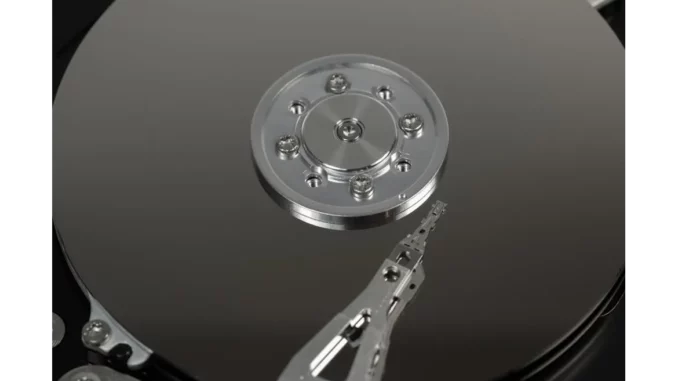
Summary
Demand for Home NAS Devices Surges Amid Digital Content Boom
The demand for home Network Attached Storage (NAS) devices is experiencing significant growth, driven by evolving patterns in digital media consumption. Alan Whitmore, a veteran technology analyst, highlights the increasing appeal of NAS systems as secure, centralised storage solutions amid growing concerns over data privacy and security. The market is buoyed by technological advancements, geographical expansion, and consumer demand for scalable and customisable storage solutions.
Main Article
The rise in digital content creation and consumption has led to a burgeoning market for home Network Attached Storage (NAS) devices. This trend is underscored by the need for reliable and secure storage solutions for a wide array of digital data, ranging from high-definition videos to extensive photo libraries and complex software applications. Alan Whitmore, an experienced technology analyst, provides insight into the factors fuelling this demand and the challenges the industry faces.
Shifting Digital Media Consumption
Whitmore observes, “The way we consume digital media has fundamentally changed over the past few years. People are generating more content than ever before.” This shift not only increases the volume of data but also transforms expectations around data accessibility and security. Home NAS devices cater to these demands by offering a centralised solution that promises both security and ease of access. They allow users to manage their data independently, mitigating risks associated with public cloud storage, such as unauthorised access and data breaches.
Market Segmentation and User Preferences
The home NAS market is highly dynamic, segmented by device type, storage capacity, and user preferences. Single-bay, dual-bay, and multi-bay systems cater to diverse needs, with multi-bay systems becoming increasingly popular due to their scalability and advanced features. “For families and small offices, having the ability to expand storage as needed is a huge benefit,” Whitmore points out. Additionally, storage capacity options vary, with devices offering from 4 terabytes to over 12 terabytes, accommodating different user requirements. Consumers seek flexibility and customisation, with many desiring seamless integration of additional functionalities such as video surveillance or cloud storage.
Technological Challenges and Innovations
Despite their advantages, NAS devices face challenges, particularly concerning cost and complexity. Whitmore notes, “For the average non-technical user, the learning curve can be steep.” However, he argues that the long-term benefits—such as enhanced data control and cost savings compared to cloud subscriptions—make NAS devices an appealing option.
Technological advancements are reshaping the NAS landscape. Manufacturers are incorporating cutting-edge technologies like 5G and Wi-Fi 6, enhancing data transfer speeds and network efficiency. The integration of artificial intelligence and machine learning is another significant development, offering intelligent data categorisation and improved search functionalities. These innovations not only boost efficiency but also make NAS devices more user-friendly, thus broadening their appeal.
Geographical Expansion and Growth Potential
The market’s growth potential is substantial, with North America leading due to advanced home network infrastructure and widespread smart home adoption. Europe follows closely, driven by stringent data privacy regulations. Simultaneously, the Asia-Pacific region is poised for remarkable growth, supported by digitalisation and an increasing demand for cost-effective storage solutions in emerging economies like India and China.
As digital content continues to expand, the demand for secure, scalable, and user-friendly storage solutions remains robust. As Whitmore optimistically notes, “The market is poised for incredible growth, with opportunities spanning across emerging markets and continuous advancements in connectivity and storage technology.”
Detailed Analysis
The surge in demand for NAS devices is a direct reflection of broader economic and technological trends. In an era where data is deemed as valuable as gold, consumers and businesses alike are prioritising data privacy and accessibility. This shift is further amplified by growing scepticism towards public cloud storage solutions, which have faced numerous security breaches in recent years.
Moreover, the ongoing advancements in network technologies, such as 5G, are pivotal in enhancing the efficiency and appeal of NAS devices. As these technologies become more widespread, they are expected to drive further innovations in data storage solutions, transforming how users interact with their digital content.
The geographical variance in NAS adoption also highlights regional differences in technological infrastructure and regulatory environments. Developed markets with robust network infrastructures are naturally more inclined to adopt advanced storage technologies. In contrast, emerging markets present untapped opportunities, driven by increasing digitalisation and a growing middle class seeking affordable storage solutions.
Further Development
The NAS market’s trajectory suggests a continued focus on innovation and consumer-centric solutions. Upcoming developments are likely to include even greater integration of AI and machine learning, which will enhance user experience through smarter data management systems. Additionally, the industry may explore partnerships with smart home technology providers, integrating NAS devices into broader home automation ecosystems.
As the market evolves, manufacturers are expected to address the complexity barrier, simplifying installation and management processes to attract a wider consumer base. The potential for collaboration with educational institutions or tech-savvy communities to offer training and support could also play a role in overcoming initial adoption challenges. Readers are encouraged to stay tuned for further insights and analyses as the NAS industry continues to unfold.

